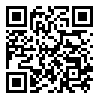Volume 5, Issue 4 (January 2025)
2025, 5(4): 260-275 |
Back to browse issues page
Ethics code: 33
Download citation:
BibTeX | RIS | EndNote | Medlars | ProCite | Reference Manager | RefWorks
Send citation to:



BibTeX | RIS | EndNote | Medlars | ProCite | Reference Manager | RefWorks
Send citation to:
Saeedi F, Omidian M, Atashafrooz A. (2025). Model of the Causal Relationship between Self-efficacy and Academic Motivation with the Mediating Role of Teacher-student Interaction in Students. Journal of Childhood Health and Education. 5(4), 260-275. doi:10.32592/jeche.5.4.260
URL: http://jeche.ir/article-1-309-en.html
URL: http://jeche.ir/article-1-309-en.html
1- Master's Degree in Educational Psychology, Faculty of Educational Sciences and Psychology, Shahid Chamran University of Ahvaz, Ahvaz, Iran
2- Associate Professor, Department of Educational Sciences, Shahid Chamran University, Ahvaz, Khuzestan, Iran
3- Assistant Professor, Department of Psychology, Faculty of Educational Sciences and Psychology, Shahid Chamran University of Ahvaz, Ahvaz, Iran
2- Associate Professor, Department of Educational Sciences, Shahid Chamran University, Ahvaz, Khuzestan, Iran
3- Assistant Professor, Department of Psychology, Faculty of Educational Sciences and Psychology, Shahid Chamran University of Ahvaz, Ahvaz, Iran
Abstract: (1110 Views)
Background and Aim: Motivation is considered a general factor that generates behavior, while academic motivation is a student's perception of himself, his talents and abilities, and his efficiency. It is also effective in determining their goals and the extent of their success and failure. The present study aimed to model the causal relationship between self-efficacy and academic motivation with the mediating role of teacher-student interaction in female first-year high school students in Ahvaz city in Iran during 2023. Methods: The present research method followed a fundamental, descriptive, correlational, and structural equation model in terms of its purpose. The research population was all 500 female sixth-grade elementary school students in District 2 of Ahvaz; among them, 220 were selected as samples according to the Krejcie & Morgan table and multi-stage randomization sampling. The research tools were the questionnaires related to Harter's Educational Motivation Scale (HEMS, 1980), Sherer General Self-Efficacy Scale (GSE, 1972), as well as the Teacher Interaction Questionnaire designed and validated by Lardasmi and Kenny (2001). In addition, the data were analyzed using SPSS (version 26) and AMOS. Results: The results indicated that the standard coefficients of the path between self-efficacy and academic motivation, between positive teacher-student interaction and academic motivation, and between negative teacher-student interaction and academic motivation are significant. Moreover, the self-efficacy variable has a significant indirect relationship with the academic motivation variable through positive teacher-student interaction, and the self-efficacy variable has a significant indirect relationship with the academic motivation variable through negative teacher-student interaction. With acceptable values of the fit indices, it was determined that the proposed model has an acceptable and appropriate fit with the data. As a result, academic motivation can be predicted based on self-efficacy through the mediation of teacher-student interaction in first-year female high school students in Ahvaz. Discussions: Overall, it was indicated that there is indeed a significant relationship between self-efficacy and academic motivation with the mediating role of teacher-student interaction, which supports the need for further research to bridge the gap between student motivation and identifying variables that influence their academic motivation.
Type of Study: Research |
Subject:
Special
Received: 2024/11/27 | Accepted: 2025/02/11 | Published: 2025/02/28
Received: 2024/11/27 | Accepted: 2025/02/11 | Published: 2025/02/28
Extended Abstract [HTM 39 KB] (28 Download)
Send email to the article author
| Rights and permissions | |
 |
This work is licensed under a Creative Commons Attribution-NonCommercial 4.0 International License. |




